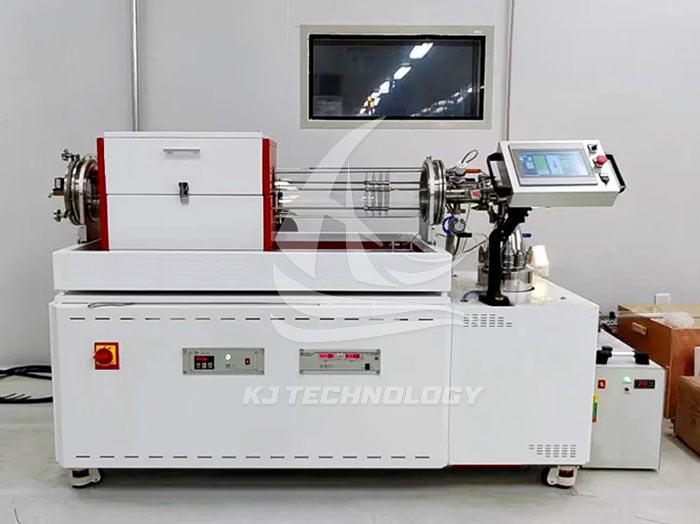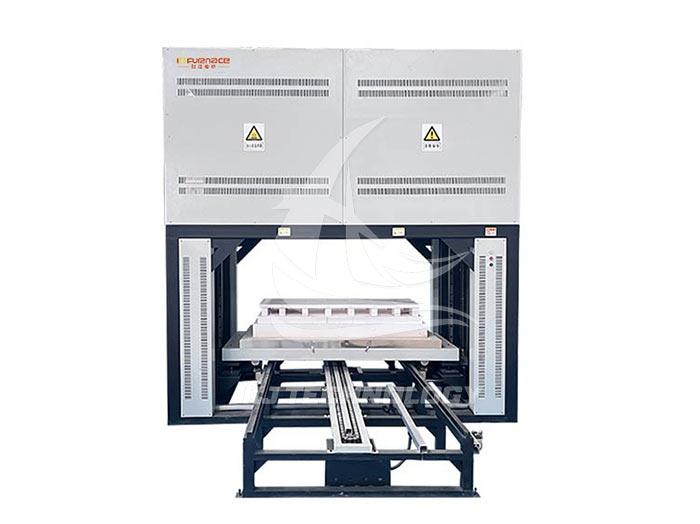Can industrial large vacuum electric furnaces be used for quenching?
 11-14-2025 Author: KJ technology
11-14-2025 Author: KJ technology
Industrial large-scale vacuum electric furnaces can be fully used for quenching processes and have significant advantages in improving material properties and ensuring quality stability. The following analysis will be conducted from four aspects: technical principles, process advantages, application scenarios, and operational points:
1. Technical principle: Quenching under vacuum environment
The quenching process of vacuum electric furnace is completed through the following steps:
Vacuum heating: Place the workpiece in a vacuum furnace and heat the material to the quenching temperature (such as the austenitizing temperature of steel) through resistance heating, induction heating, or electron beam heating.
Vacuum maintenance: Maintain a certain amount of time at high temperature to homogenize the internal structure of the material.
Rapid cooling: Quenching can be achieved through the following two methods:
Gas quenching: Fill the furnace with high-pressure inert gas (such as nitrogen or argon), use gas convection to quickly remove heat, and achieve cooling.
Oil quenching (less commonly used): Immerse the workpiece in cooling oil in a vacuum environment, but be aware that oil vapor may contaminate the vacuum system, so gas quenching is more recommended.
Key point: The vacuum environment completely isolates oxygen, avoiding oxidation and decarburization of the workpiece at high temperatures. At the same time, the gas quenching method can achieve pollution-free cooling, ensuring surface quality.
2. Process advantage: The core value of vacuum quenching
No oxidation, no decarburization
In traditional atmospheric quenching, the surface of the workpiece is prone to react with oxygen to form oxide scale, resulting in a decrease in hardness and an increase in surface roughness. Vacuum quenching completely avoids this problem, with high surface smoothness and no need for subsequent polishing treatment.
For example, after vacuum quenching, high-speed steel cutting tools have high surface hardness and no oxide layer, significantly improving wear resistance.
Small deformation amount
Vacuum quenching adopts gas cooling method, with uniform cooling speed and more reasonable distribution of thermal stress. The deformation of the workpiece is reduced by 30% -50% compared to oil quenching, especially suitable for heat treatment of precision parts such as molds and gears.
Significant degassing effect
Vacuum environment can remove gases such as hydrogen and nitrogen inside materials, reduce the risk of hydrogen embrittlement, and improve material toughness and fatigue life. For example, after vacuum quenching, the crack propagation resistance of aircraft engine blades is improved.
Clean and pollution-free
The gas quenching process produces no oil stains or smoke, meets environmental requirements, and does not require cleaning of the workpiece, simplifying the production process.
3. Application scenario: Typical industry of vacuum quenching
aerospace
Used for quenching key components such as high-temperature alloy blades and turbine discs to enhance their high-temperature strength and creep resistance. For example, after vacuum quenching of a certain type of aircraft engine blade, the working temperature is increased from 600 ℃ to 800 ℃.
automotive industry
Process mold steel (such as H13, S7) and gear steel (such as 20CrMnTi) to improve mold life and gear wear resistance. For example, after vacuum quenching of automotive gears, the uniformity error of tooth surface hardness is ≤ 1HRC, and the noise is reduced by 10dB.
Tool manufacturing
Quenching of high-speed steel cutting tools (such as drill bits and milling cutters) and hard alloy cutting tools to maintain the sharpness and hardness of the cutting edge. For example, the cutting life of drill bits after vacuum quenching is three times longer than that of conventional processing.
Electronic Semiconductor
Quenching magnetic materials (such as neodymium iron boron) and precision ceramics to enhance their magnetic properties and mechanical strength, meeting the demand for miniaturization of electronic components.
4. Key points of operation: Process control of vacuum quenching
temperature control
The quenching temperature needs to be precisely set according to the material composition and performance requirements. For example, the vacuum quenching temperature of Cr12MoV steel is 1020-1050 ℃, with a temperature deviation within ± 5 ℃.
Vacuum degree selection
The general quenching process requires a vacuum degree of ≤ 10 ⁻ ² Pa, and high-precision parts (such as optical molds) require ≤ 10 ⁻ ³ Pa to completely eliminate the risk of oxidation.
Gas quenching pressure and flow rate
The gas quenching pressure is usually 0.2-0.6MPa, and the flow rate needs to be adjusted according to the size of the workpiece. For example, small parts can be subjected to high-pressure rapid gas quenching (0.6 MPa), while large workpieces require a reduction in pressure (0.2 MPa) to avoid deformation.
Cooling time control
The cooling time needs to be determined through experiments to ensure that the workpiece is completely transformed into a martensitic structure. For example, after vacuum quenching of 45 steel, it needs to be maintained in a gas quenching environment for 10-15 minutes to complete the phase transformation.
5. Case verification: Actual effect of vacuum quenching
Case study of a military industrial enterprise:
Problem: The surface of high-strength steel parts treated with traditional oil quenching is severely oxidized and requires additional acid washing, resulting in a decrease in dimensional accuracy.
Solution: Switch to vacuum electric furnace gas quenching process, with a vacuum degree of 10 ⁻ Pa and a gas quenching pressure of 0.4MPa.
Result: There was no oxidation on the surface of the parts, and the dimensional tolerance was controlled within ± 0.02mm. The pass rate increased from 75% to 98%.
Case study of a certain automobile mold factory:
Problem: H13 steel molds have uneven hardness (48-52HRC) and short service life after conventional quenching.
Solution: Adopt vacuum electric furnace segmented heating (850 ℃ preheating+1030 ℃ quenching)+high-pressure gas quenching (0.5MPa).
Result: The uniformity of mold hardness reaches 50-52HRC, and the service life is extended by 2 times.








